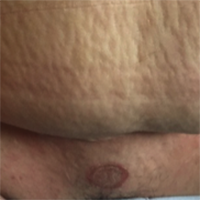An unusual case of Lyme borreliosis: can we miss it?

Accepted: 23 March 2019
HTML: 10
All claims expressed in this article are solely those of the authors and do not necessarily represent those of their affiliated organizations, or those of the publisher, the editors and the reviewers. Any product that may be evaluated in this article or claim that may be made by its manufacturer is not guaranteed or endorsed by the publisher.
Lyme borreliosis is an infective disease that is usually transmitted to humans via biting by bacteria-infected Ixodes tick. The disease is multisystemic and the affected organs are the skin (Erythema migrans), nervous system, eyes, heart and joints. Borrelia burgdorferi is the bacterium that causes borreliosis and the hosts are rodents of the genus Apodemus. In the Balkan region, Ixodes ricinus is the most representative vector. A bite from an infected insect is the most common mode of transmitting Borrelia; however, transplacental transmission has also been documented. Pathogenesis of the disease consists of both direct and indirect mechanisms of immunological reactions which result in the production of IgM antibodies to Borrelia in the first 3-6 weeks, and production of IgG class after 6 weeks. Many skin diseases and skin symptoms mimicking Lyme borreliosis, such as dermatomycosis, erysipelas, and undefined hyperpigmentation must be elaborated and considered for borreliosis, as skin symptoms of borreliosis can imitate many of them.
PAGEPress has chosen to apply the Creative Commons Attribution NonCommercial 4.0 International License (CC BY-NC 4.0) to all manuscripts to be published.





 https://doi.org/10.4081/dr.2019.8021
https://doi.org/10.4081/dr.2019.8021



